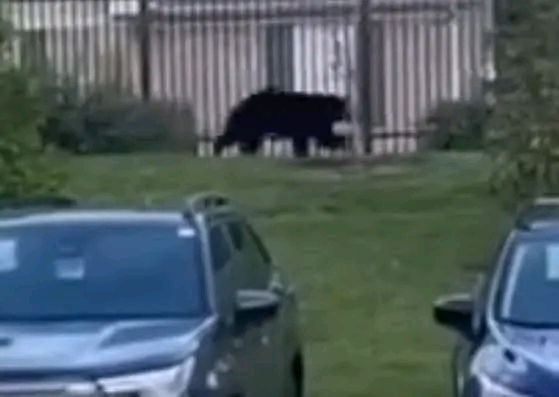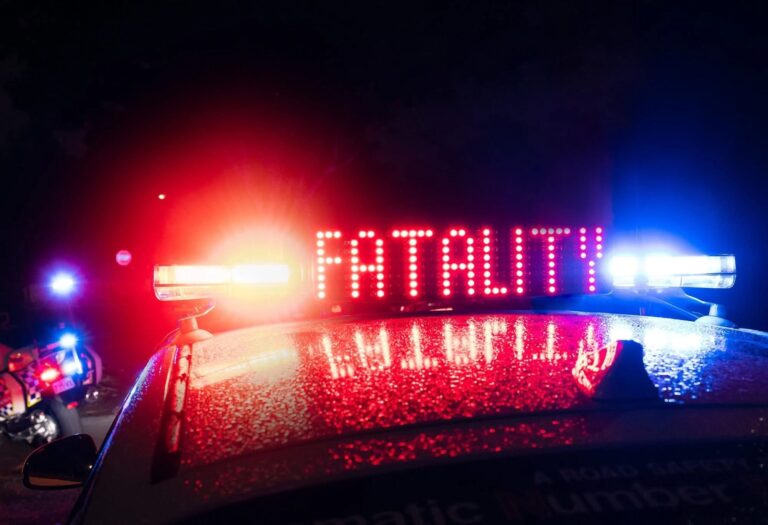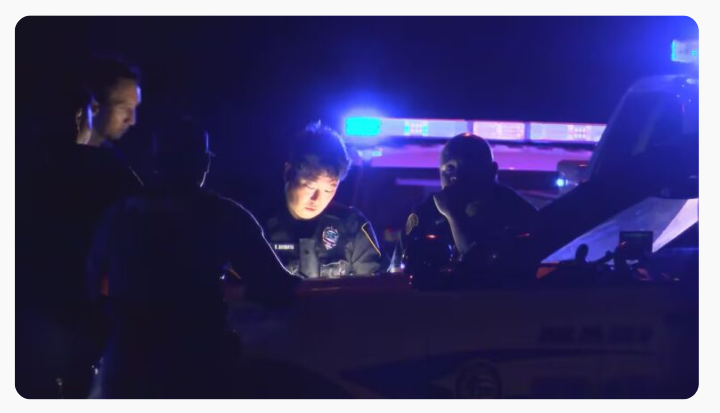Juvenile Black Bear Killed on Vietnam Veterans Parkway in Gallatin, Tennessee; Tragic Collision Sparks Mourning and Urgent Call for Wildlife Safety Measures Amid Increasing Bear Sightings
Gallatin, TN — June 2, 2025 — In a heartbreaking and tragic turn of events early Sunday morning, a juvenile black bear—previously sighted by numerous residents throughout Gallatin and wider Sumner County—was struck and killed by a vehicle while crossing Vietnam Veterans Parkway (State Route 386), between exits 12 and 14. The fatal collision has not only saddened locals but has also reignited urgent conversations about wildlife protection, urban encroachment, and driver awareness in areas of growing animal movement.
The young bear, estimated to be approximately one to two years old, had become something of a local fascination and concern in the days leading up to its untimely death. Social media posts, eyewitness reports, and official alerts had warned of the bear’s presence in residential neighborhoods, wooded backyards, and even parking lots in the Gallatin area. But fascination turned to devastation early Sunday when multiple drivers called 911 to report a lifeless black bear along the side of the highway.
The Tragic Incident: A Sudden End to a Young Bear’s Journey
According to the Tennessee Highway Patrol (THP), the incident occurred just after dawn—an hour of the day when visibility is limited and morning traffic begins to thicken. A vehicle traveling westbound struck the bear near the median. The driver remained at the scene and was reported to be physically unharmed, though understandably shaken.
“It was unavoidable,” a witness said in a statement to local reporters. “The bear came out of the trees so suddenly. The driver had no chance to stop.”
When first responders arrived, they confirmed the bear had died from the impact. Wildlife officers from the Tennessee Wildlife Resources Agency (TWRA) were dispatched shortly thereafter to recover the body and document the incident.
The bear’s remains were respectfully removed from the roadside later that morning, and TWRA biologists plan to examine the body further to understand its condition, diet, and origin. This will aid in broader studies of bear migration patterns and urban encroachment in Middle Tennessee.
Rising Bear Sightings in Sumner County: A Growing Pattern
The presence of a black bear in Gallatin—particularly so close to suburban and urban areas—was unusual but not unprecedented. In the days leading up to the incident, residents across Gallatin, Hendersonville, and surrounding communities had reported seeing the bear wandering through wooded residential zones and across country roads.
Doorbell cameras captured the bear sniffing garbage bins and wandering through yards. Several sightings occurred near school zones and shopping centers, prompting warnings from local law enforcement and wildlife agencies. The TWRA confirmed these sightings and released public safety advisories urging people not to approach the bear and to properly store trash, pet food, and other attractants.
“Black bears are naturally shy and non-aggressive,” said TWRA officer Danielle Harper in a recent statement. “But when they venture into populated areas, they’re often looking for food—and that increases the chances of tragic encounters like this.”
Experts believe the juvenile bear may have wandered into Gallatin from the Cumberland Plateau or Eastern Highland Rim region, where Tennessee’s bear population is slowly expanding westward due to habitat loss, breeding dispersion, and changes in seasonal food supply.
Urban Encroachment: A Collision Between Wildlife and Development
Gallatin, like many communities in Middle Tennessee, has seen rapid suburban expansion in recent years. Forested land once home to diverse wildlife is increasingly being replaced by housing developments, commercial centers, and road infrastructure. While these changes benefit human populations, they create dangerous and confusing environments for animals forced to adapt or relocate.
“It’s not that the bear was in our neighborhood,” said local resident Kelly Monroe. “We’ve moved into its habitat. And sadly, this is the result.”
The TWRA notes that black bear sightings in suburban Tennessee are becoming more frequent. Juvenile males, in particular, are known to roam long distances as they search for new territory. Without established corridors for safe movement—such as wildlife underpasses or greenways—these animals are forced to cross busy roads, resulting in a high risk of injury or death.
Community Reaction: Grief, Sympathy, and Calls for Change
News of the bear’s death has deeply affected the Gallatin community. Residents who had followed the bear’s journey over the past week expressed sorrow and frustration on social media, with many calling for wildlife-friendly infrastructure, stricter speed enforcement on parkways, and increased public awareness campaigns.
One Facebook user wrote:
“We failed this bear. We saw it coming for days, and yet there were no speed alerts, no signs, no temporary patrols on 386. It didn’t have to end like this.”
Another resident posted a photo taken days before of the bear wandering through a wooded trail, with the caption: “Rest in peace, sweet bear. You were just trying to survive.”
In response to the growing outcry, Gallatin Mayor Paige Brown issued a statement acknowledging the community’s grief and pledging to work with TWRA and TDOT (Tennessee Department of Transportation) to examine potential wildlife safety improvements in high-traffic areas.
“We share in the community’s sorrow,” Mayor Brown said. “Gallatin is blessed with beautiful natural surroundings, and we must take steps to protect the animals that live among us. We will explore every avenue to prevent future tragedies.”
Wildlife Safety: What Can Be Done?
Experts say there are multiple ways to reduce animal-vehicle collisions and foster coexistence with wildlife:
- Wildlife crossings: Bridges or underpasses specifically designed for animals to cross highways safely. These have proven highly effective in areas like Florida, California, and Canada.
- Wildlife detection systems: Sensors that detect large animals near roadways and activate flashing lights to warn drivers.
- Public education: Teaching communities how to safely handle wildlife encounters, store attractants, and report sightings.
- Lowered speed zones during migration seasons: Temporary speed reductions in known wildlife corridors.
The TWRA has long advocated for these tools but acknowledges that implementation often requires coordination between state agencies, transportation departments, and local governments.
Ecological Significance of Black Bears
Black bears are Tennessee’s only native bear species and play a critical role in the ecosystem. As omnivores, they contribute to seed dispersal, help control insect populations, and act as indicators of forest health. Their survival depends on large, uninterrupted tracts of forest and minimal conflict with humans.
Killing a black bear—intentionally or otherwise—is not just a legal issue, but an environmental one. Each individual lost is a blow to a species that continues to face challenges from poaching, habitat destruction, and vehicle collisions.
TWRA has reminded the public that while bear sightings may feel threatening, black bears are generally shy and avoidant of human contact. Their appearance in neighborhoods is usually the result of hunger, curiosity, or habitat loss—not aggression.
Final Farewell: The Bear That Touched a Town
Though its time in Gallatin was brief, the juvenile black bear left an undeniable mark. It reminded the town of the fragile balance between development and nature, and how quickly curiosity and wonder can turn into tragedy.
Locals have proposed a small memorial near the site of the incident or in one of Gallatin’s nature parks, both as a tribute to the young bear and a call to action for increased wildlife protection.
“This bear didn’t die in vain,” said wildlife advocate and educator Jason Marks. “It has sparked conversations that might just save the next one.”
Summary Highlights:
- A juvenile black bear was struck and killed by a vehicle on Vietnam Veterans Parkway in Gallatin, TN on June 1, 2025.
- The bear had been spotted multiple times across Gallatin and Sumner County in the days before the accident.
- TWRA and law enforcement responded to the scene; no injuries to the driver were reported.
- The community is mourning the loss and calling for enhanced wildlife protections.
- Wildlife officials emphasize the growing need for safe wildlife corridors and public education amid rising suburban development.











Leave a Reply